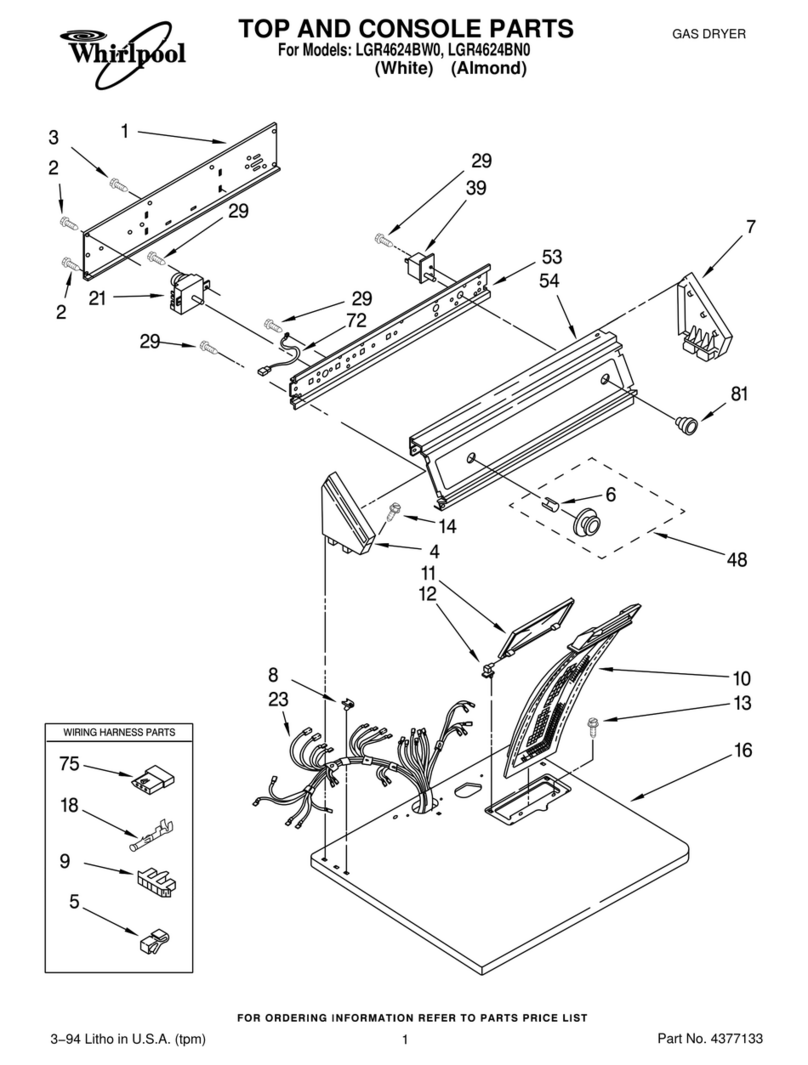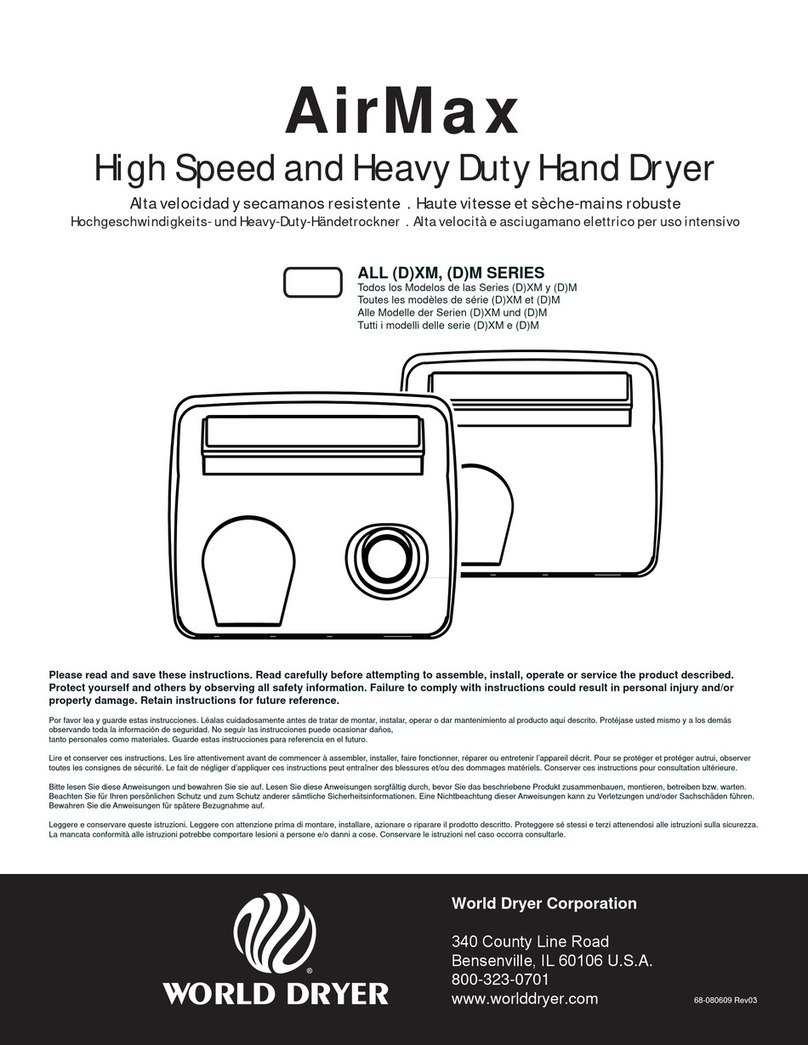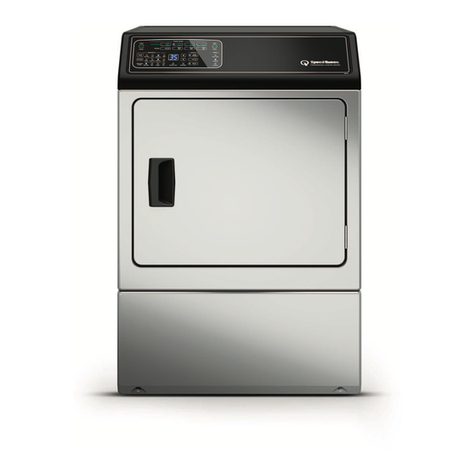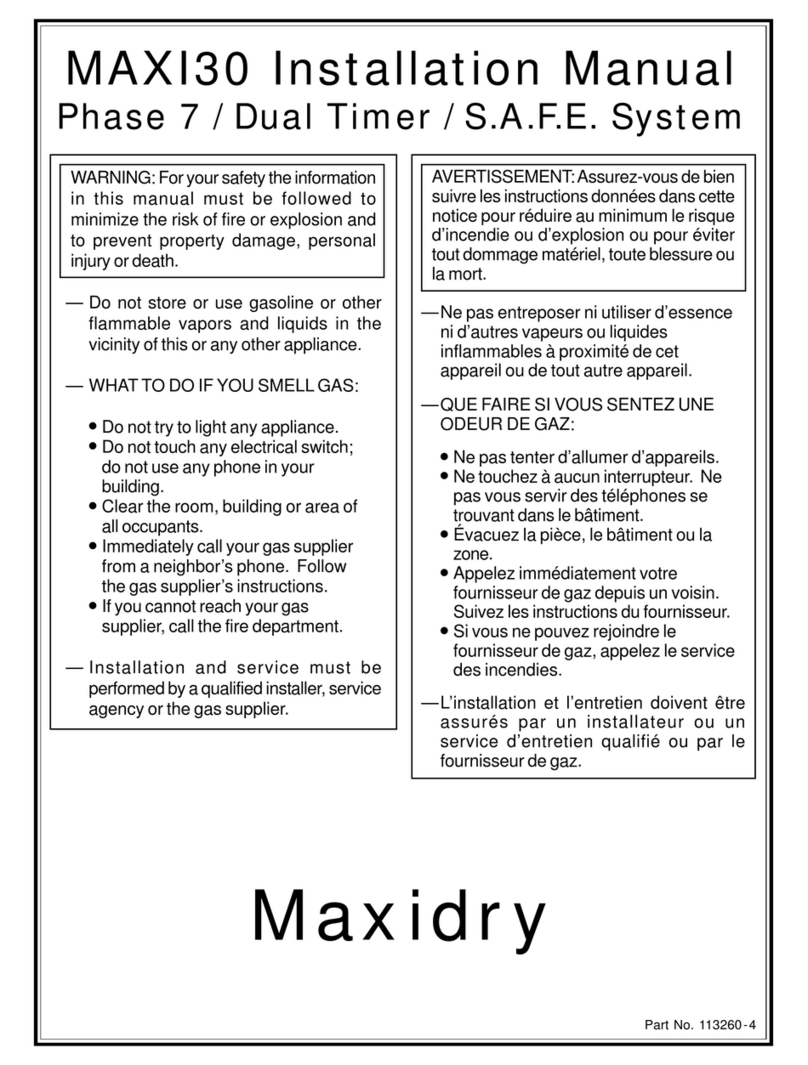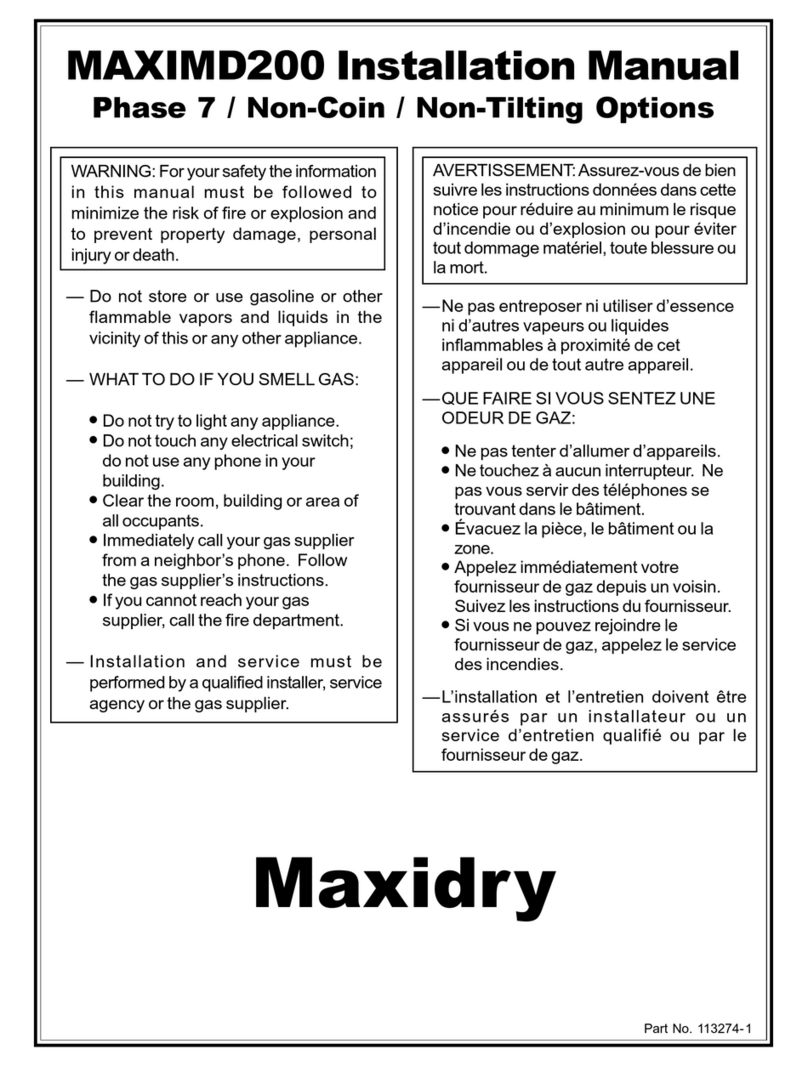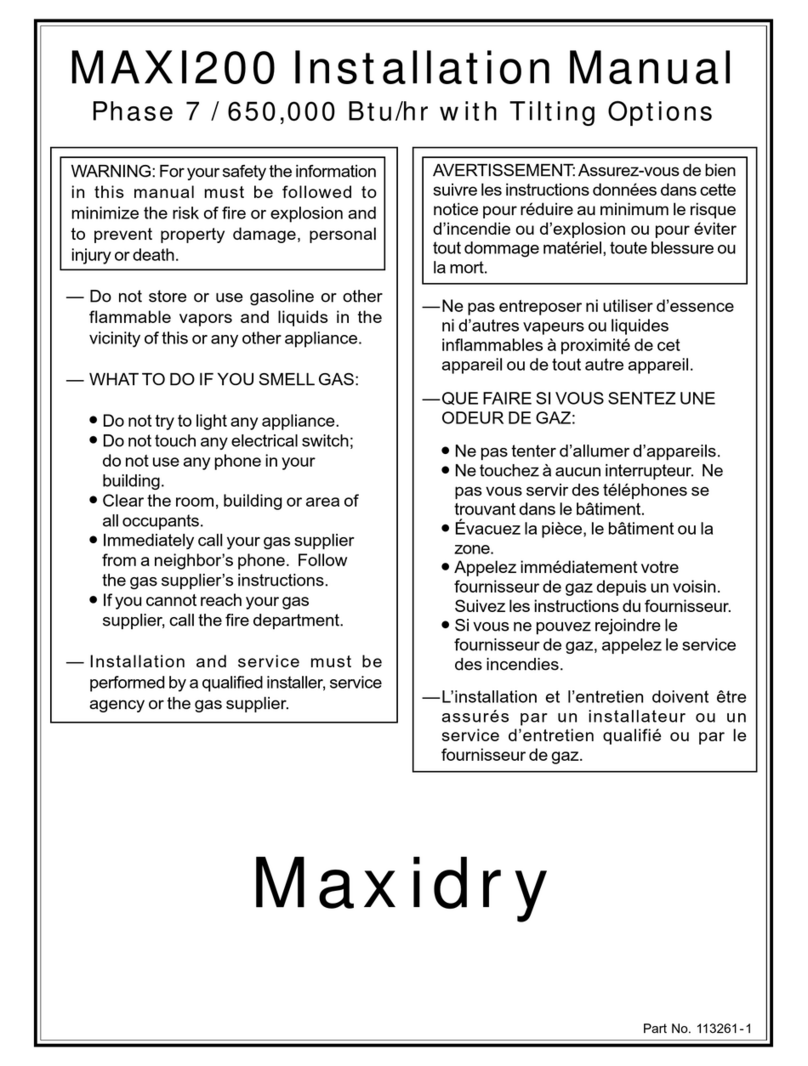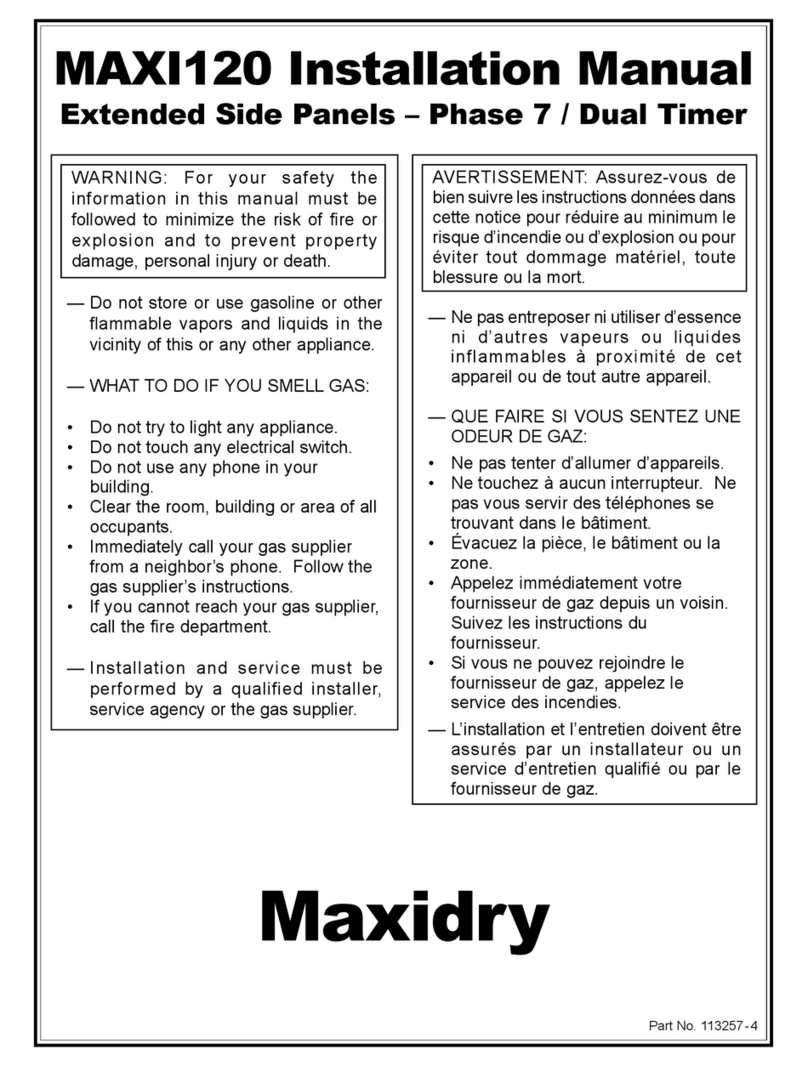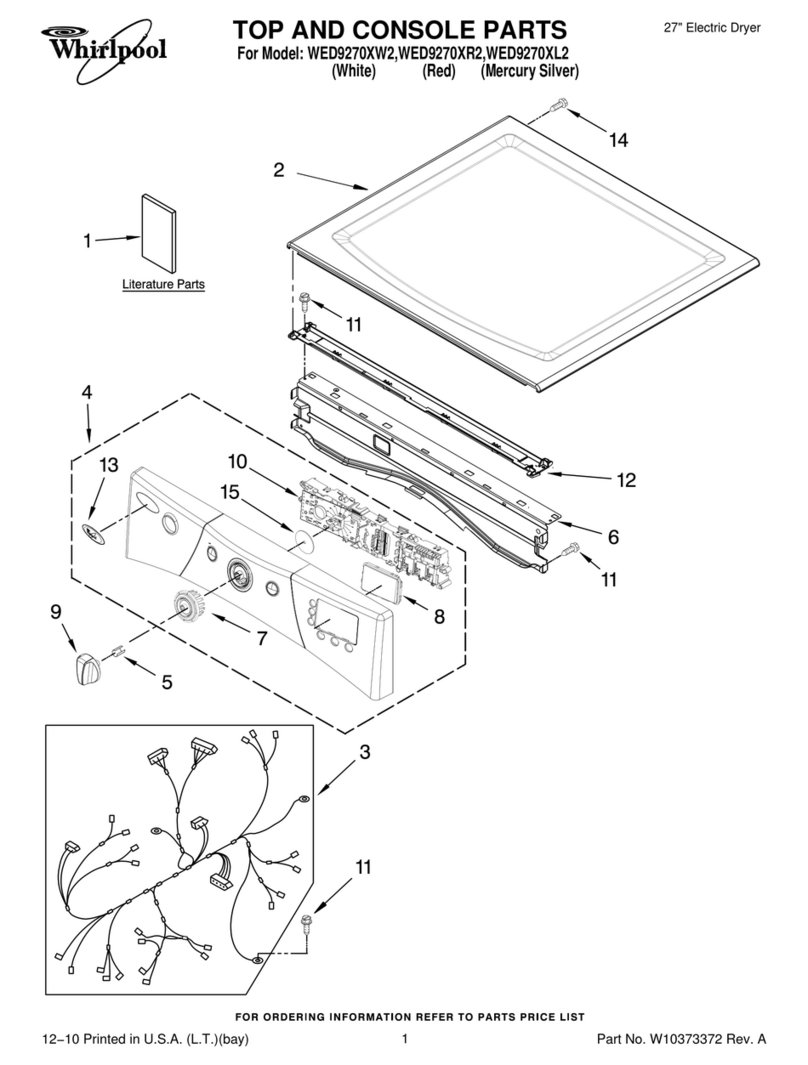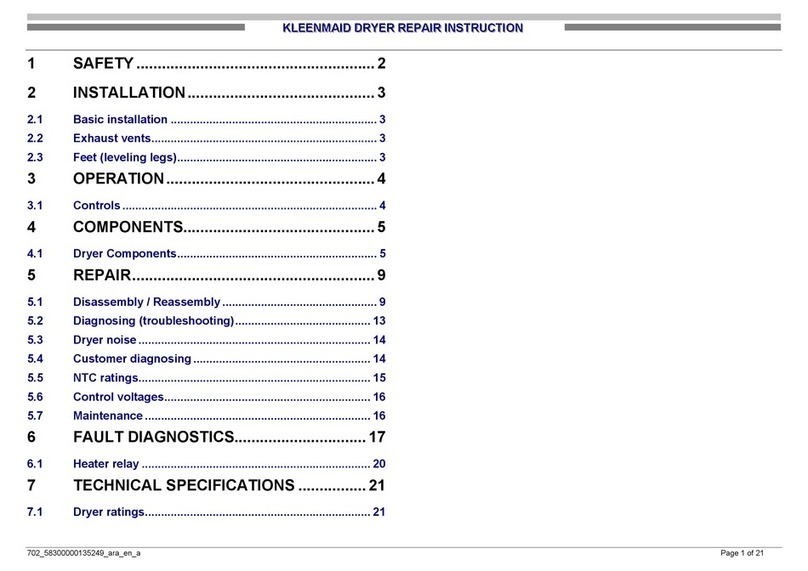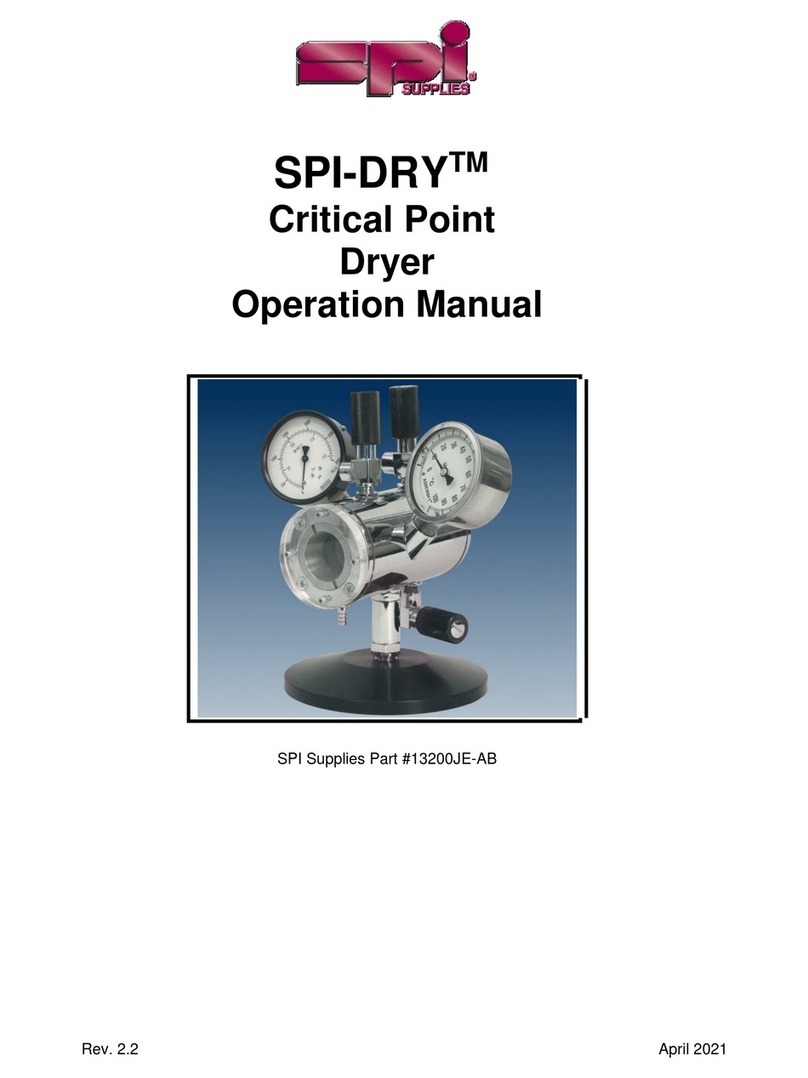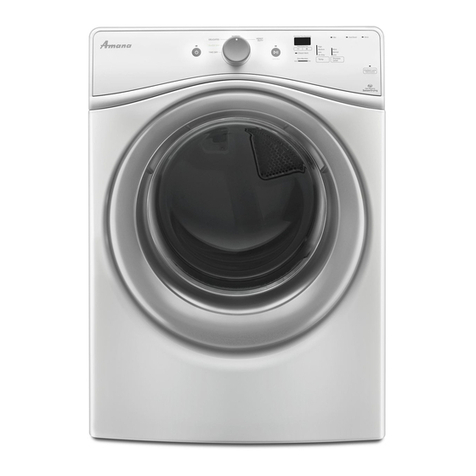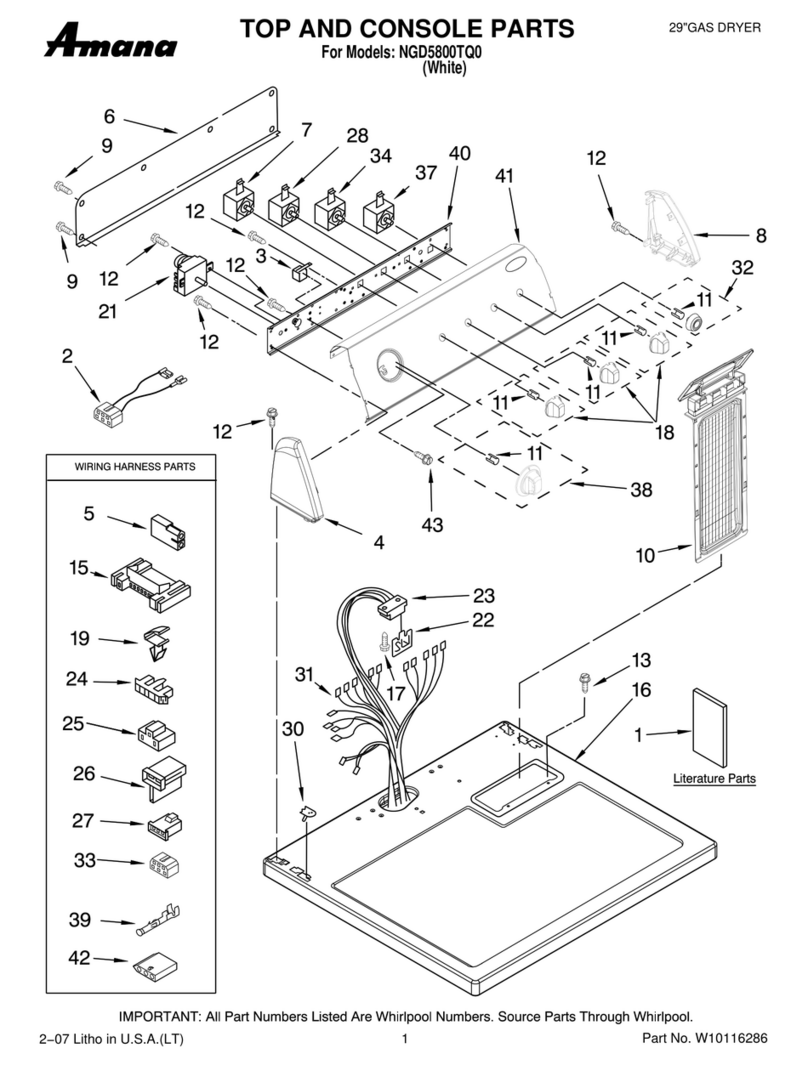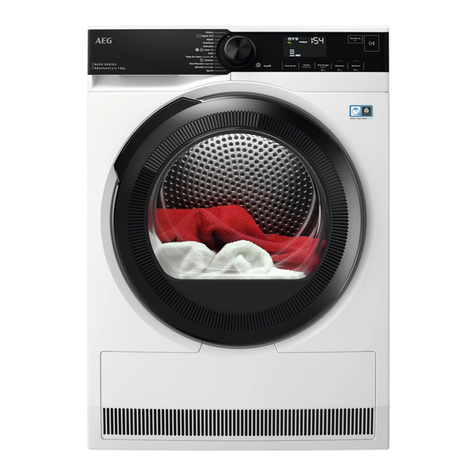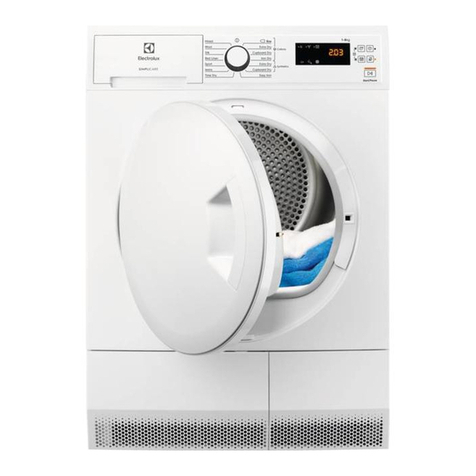
4113267-1
MAXIMUM CAPACITY (DRY WEIGHT) 11 5 lb 52.16 kg
TUMBLER DIAMETER 42” 106.68 cm
TUMBLER DEPTH 41-1 4” 104.78 cm
TUMBLER VOLUME 33.10 cu ft 937.29 L
TUMBLER DRIVE MOTOR 3 4 hp 0.56 kW
BLOWER FAN MOTOR 3 hp 2.24 kW
DOOR OPENING (DIAMETER) 31-3 8” 79.69 cm
DOOR SILL HEIGHT 27-1 2” 69.85 cm
WATER CONNECTION 3 4 ”-11.5 NH
(North America)
3 4” B.S.P.T.
(Outside North America)
DRYERS PER 20’ 40’ CONTAINER 4 8
DRYERS PER 48’ 53’ TRUCK 9 10
VOLTAGE AVAILABLE 208-575V 3ø 3,4w 50 60 Hz
APPROXIMATE NET WEIGHT 1,260 lb 571.53 kg
APPROXIMATE SHIPPING WEIGHT 1,400 lb 635.03 kg
AIRFLOW 60 Hz 2,100 cfm 59.47 cmm
50 Hz 1,750 cfm 49.55 cmm
HEAT INPUT 343 ,0 0 0 B tu hr 86,435 kcal/hr
EXHAUST CONNECTION (DIAMETER) 14 ” 35.56 cm
COMPRESSED AIR CONNECTION N A
COMPRESSED AIR VOLUME N A
INLE T P IPE C ONNECTION 1 ” F.N . P. T.
1” F.B.S.P.T.
(CE and Australia Only)
VOLTAGE AVAILABLE 208-575V 3ø 3,4w 50 60 Hz
APPROXIMATE NET WEIGHT 1,260 lb 571.53 kg
APPROXIMATE SHIPPING WEIGHT 1,400 lb 635.03 kg
AIRFLOW 60 Hz 2,100 cfm 59.47 cmm
50 Hz 1,750 cfm 49.55 cmm
EXHAUST CONNECTION (DIAMETER) 14 ” 35.56 cm
COMPRESSED AIR CONNECTION N A
COMPRESSED AIR VOLUME N A
OVEN SIZE
kW Btu hr kcal/hr
60 204,700 51,600
72 245,700 61,900
VOLTAGE AVAILABLE 208-575V 3ø 3,4w 50 60 Hz
APPROXIMATE NET WEIGHT 1,555 lb 705.34 kg
APPROXIMATE SHIPPING WEIGHT 1,695 lb 768.84 kg
AIRFLOW 60 Hz 2,100 cfm 59.47 cmm
50 Hz 1,750 cfm 49.55 cmm
STEAM CONSUMPTION 375 lb hr 170.10 kg/hr
OPERATING STEAM PRESSURE 125 psi max 8.62 bar
EXHAUST CONNECTION (DIAMETER) 14 ” 35.56 cm
COMPRESSED AIR CONNECTION 1 8” N.P.T.
COMPRESSED AIR VOLUME 0.75 cfh 0.02 cmh
BOILER HORSEPOWER (NORMAL LOAD) 11 Bhp
SUPPLY CONNECTIONS (2) 1 -1 4” M.N.P.T.
RETURN CONNECTIONS (2) 1” M.N.P.T.
SECTION II
SPECIFICATIONS/COMPONENT IDENTIFICATION
A. SPECIFICATIONS
Electric
Steam Ga
Shaded areas are stated in metric equivalents 9 14 10
IMPORTANT: Steam dryers must be provided with a clean, dry, regulated 80 psi +/- 10 psi (5.51
bar +/- 0.69 bar) air supply.
NOTE: The manufacturer reserves the right to make changes in specifications at any time without
notice or obligation.



